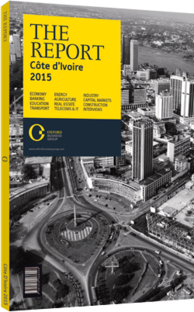SGBCI: Banking
The Company
Société Générale de Banques en Côte d’Ivoire (SGBCI) is the largest bank in the West African Economic and Monetary Union and was created in 1962 from the local branches of France’s Société Générale bank, with the participation of the government and several international financial partners. SGBCI was subsequently listed on the regional stock exchange (Bourse Régionale des Valeurs Mobilières, BRVM) in April 1976, and is now the leading bank in the Ivorian banking sector with total assets of CFA865.4bn (€1.3bn).
For one month at the end of 2013, SGBCI lost its leadership position in terms of customer loans to Ecobank, due to growing competition in the segment. By the end of 2013, SGBCI had lost 3% of its market share compared to end-2012.
The cost-to-income ratio also saw a deterioration, from 54% to 61%, due in large part to the expansion of its branch network and labour unrest that led to a 12% increase in overhead costs. In October 2013 an agreement was signed between SGBCI and its employees to increase salaries by 5%. This increase in payroll, combined with stagnant net banking income (up 1% over 2012) and a deterioration in the cost of risk – up to CFA11bn (€16.5m) in 2013 compared to just CFA18m (€27,000) the year before – led to a 44% drop in total profits.
Outlook
However, the bank has good prospects for the 2014 financial year and should produce a higher net banking income to cover the increase in staffing costs. Net income peaked at CFA13.62bn (€20.43m) in the first half of 2014, equivalent to 166% growth over the CFA5.11bn (€7.67m) seen in the first half of 2013. This increase can be explained by several factors, including higher net banking income, up 11.7% at CFA33.89bn (€50.84m) thanks to better use of surplus cash; an increase in net commissions and other operating income and controlled interest expenses; and a positive cost of risk, at CFA2.3bn (€3.45m), on large provision recoveries.
Furthermore, thanks to the loan growth policy put in place by the new management, the bank should record loan growth of at least 30% for the year and deposit growth of approximately 8%.
As of the end of November 2014, SGBCI accounted for CFA842.73bn (€1.26bn) of the banking sector’s combined resources of CFA5.44trn (€8.16bn). This was up 22.29% y-o-y. The bank also accounted for CFA688.64bn (€1.03bn) of the total CFA4.59trn (€6.89bn) in loans provided by Ivorian banks – a 29.99% increase over end-November 2013. By market share, this represents 17.4% in term of customer loans and 17.1% in term of customer deposits.
SGBCI’s loan growth will likely be driven by economic growth in the country, projected at around 8% in 2015, as well as the bank’s aggressive loan policy, implemented as a means of challenging its competition. The bank also plans to open 10 branches per year starting in 2015 to expand its customer base. SGBCI shows strong willingness to extend coverage to the whole country, reaching as many as 90 branches by 2017, up from its current 67.
With a price-to-book ratio of 3.19x, SGBCI is currently trading higher than the sector average on the BRVM of 2.21x. This is explained by strong market expectations for SGBCI’s growth. We expect a CFA25bn (€37.5m) net profit in 2014, compared to CFA13bn (€19.5m) in 2013.
Development Strategy
As the leader in the Ivorian banking industry, SGBCI is taking advantage of the huge investment needs in the country due to the period of reconstruction and recovery. The strategy of SGBCI is to be more active in retail banking and consolidate its position in the corporate segments.
The bank also plans to recapture the 3% market share lost in 2013. To address greater competition, the bank has decided to develop its commercial activity, and to pursue this strategy, the management hired two new deputy managing directors to implement a new, aggressive commercial policy.
You have reached the limit of premium articles you can view for free.
Choose from the options below to purchase print or digital editions of our Reports. You can also purchase a website subscription giving you unlimited access to all of our Reports online for 12 months.
If you have already purchased this Report or have a website subscription, please login to continue.

